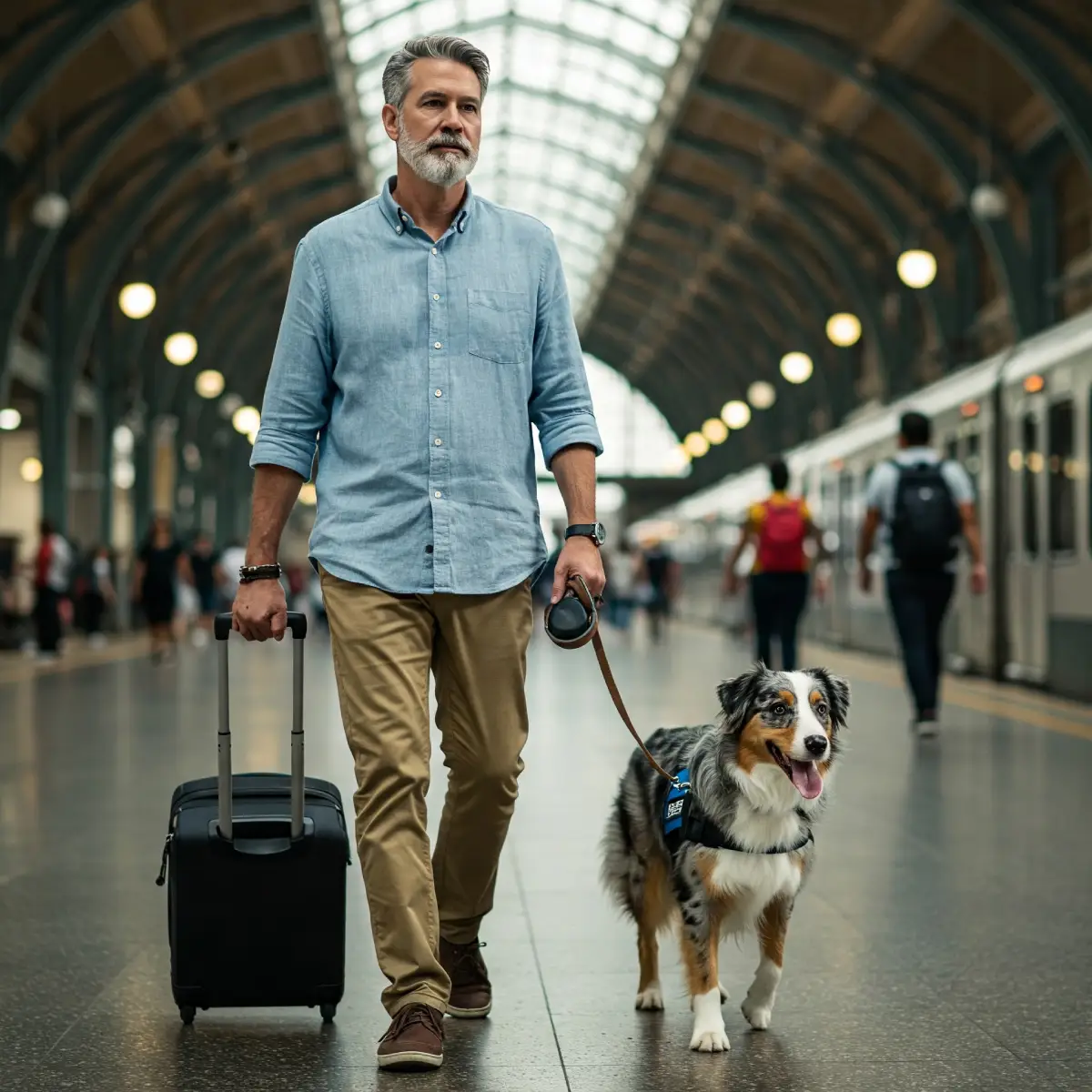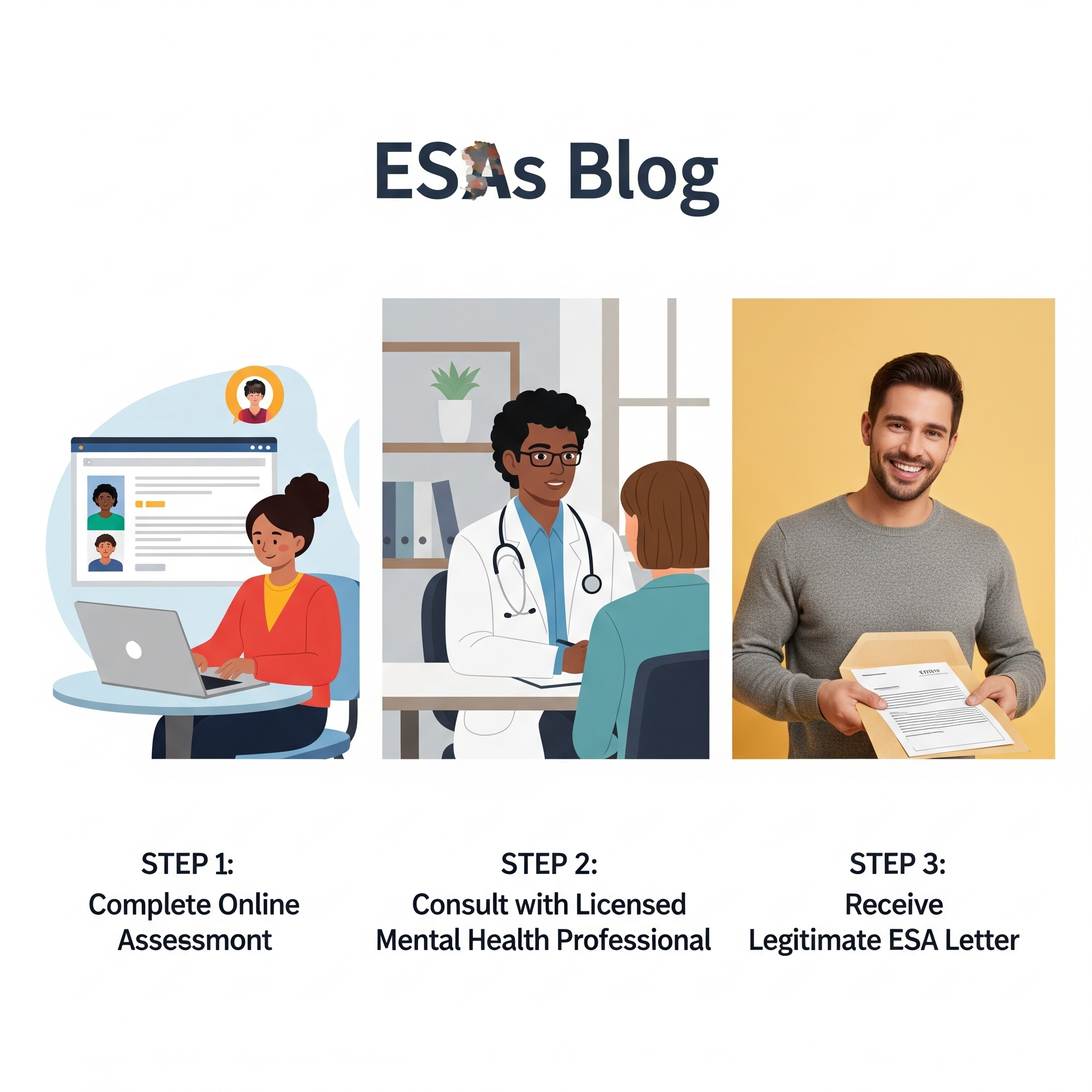For many individuals living with mental health conditions, an Emotional Support Animal (ESA) provides invaluable comfort and stability in daily life. When it comes to air travel, however, the rules and regulations surrounding ESAs have undergone significant changes in recent years. What was once a relatively straightforward process has evolved, making thorough preparation absolutely essential for a smooth journey with your beloved ESA. At CertifyESA, your trusted provider of legitimate ESA and PSD letters, we understand the profound bond you share with your emotional support companion. This comprehensive guide will walk you through every critical step to prepare your ESA for air travel, ensuring you’re compliant and your journey is as stress-free as possible.
Understanding the Shifting Landscape: ACAA Changes and Your ESA
The most significant change affecting ESA air travel came with the U.S. Department of Transportation (DOT) amending the Air Carrier Access Act (ACAA) in 2020. As of January 11, 2021, airlines are no longer required to recognize ESAs as service animals. This means that ESAs are now generally treated as pets by airlines, and must adhere to standard pet policies, including potential fees, size/breed restrictions, and travel in a carrier that fits under the seat. (U.S. Department of Transportation, 2020).
Important Note: If your animal is a Psychiatric Service Dog (PSD) specifically trained to perform tasks that mitigate your mental health disability, they are still recognized as service animals under the ACAA and have different travel requirements, including the DOT Service Animal Air Transportation Form. This blog focuses specifically on Emotional Support Animals now largely classified as pets for air travel.
Pre-Flight Preparations: Weeks to Months Before Your Trip
Thorough preparation is the cornerstone of a successful and stress-free journey with your ESA. Start these steps well in advance:
1. Verify Airline Pet Policies:
- Action: This is the absolute first and most critical step. Immediately contact your chosen airline directly or visit their official website’s “Pets” or “Traveling with Animals” section. Do not assume all airlines have the same rules.
- Key Details to Inquire About:
- In-Cabin vs. Cargo: Determine if your ESA is small enough to fly in the cabin under the seat in front of you. Most airlines have strict size and weight limits for in-cabin pets. Larger ESAs will likely need to travel as checked baggage in the cargo hold, which comes with its own set of considerations and risks.
- Carrier Requirements: Inquire about specific dimensions, materials, and ventilation requirements for the pet carrier. Most airlines require soft-sided, airline-approved carriers that fit under the seat.
- Fees: Be prepared for substantial pet travel fees, which can vary widely by airline and route.
- Reservations: Many airlines limit the number of pets allowed in the cabin per flight. Make a reservation for your ESA as soon as your flight is booked to secure a spot.
- Breed Restrictions: Some airlines have restrictions on certain “brachycephalic” (snub-nosed) breeds due to respiratory issues, especially in cargo.
- Health and Vaccination Requirements: Understand all necessary veterinary documentation.
2. Obtain Necessary Veterinary Documentation:
- Action: Schedule a comprehensive vet visit for your ESA several weeks before your trip.
- Essential Documents:
- Health Certificate: Many airlines and destinations require a health certificate issued by a licensed veterinarian within a specific timeframe (e.g., 10 days) of your travel date. This certifies your ESA is healthy enough to travel.
- Vaccination Records: Ensure your ESA is up-to-date on all required vaccinations, especially rabies. Carry proof of these vaccinations.
- Rabies Tag: Ensure your ESA’s collar has a current rabies tag.
- Microchip Information: Have your ESA microchipped and ensure your contact information is current. This is vital for identification if your ESA gets separated from you.
- Parasite Prevention: Ensure your ESA is current on flea, tick, and heartworm prevention.
3. Purchase an Airline-Approved Carrier:
- Action: Invest in a high-quality, airline-approved pet carrier that meets your chosen airline’s specific size requirements for in-cabin travel.
- Tips for Carrier Selection:
- Comfort: The carrier should be large enough for your ESA to stand up, turn around, and lie down comfortably.
- Ventilation: Ensure adequate ventilation.
- Identification: Label the carrier clearly with your name, contact information, and your ESA’s name.
- Familiarization: Start acclimating your ESA to the carrier well in advance of the trip. Make it a positive experience by placing treats, toys, and familiar bedding inside. Leave it open in your home so your ESA can explore it freely.
4. Acclimate Your ESA to Travel Conditions:
- Action: Gradually expose your ESA to experiences similar to air travel.
- Training Tips:
- Carrier Comfort: Practice having your ESA spend time in the carrier, gradually increasing the duration. Take short car rides with them in the carrier to simulate movement.
- Loud Noises: Play recordings of airport sounds (announcements, rolling suitcases, distant plane noises) at low volumes to help desensitize your ESA to potential stressors.
- Crowds: If appropriate for your ESA’s temperament, take them to moderately crowded, pet-friendly public places (if allowed and safe) to help them get used to being around many people.
- “Stay” and “Quiet” Commands: Reinforce “stay” and “quiet” commands for maintaining calm in confined spaces.
5. Plan for Potty Breaks:
- Action: Research designated pet relief areas at your departure, arrival, and any connecting airports.
- Information to Gather:
- Location of indoor and outdoor pet relief areas.
- Hours of operation (if applicable).
- Any specific procedures for using these areas.
Packing Essentials: What to Bring for Your ESA
Having the right supplies will ensure your ESA’s comfort and well-being during the journey:
6. ESA Travel Kit:
- Food and Water: Pack enough of your ESA’s regular food for the entire trip, plus a little extra in case of delays. Bring a collapsible water bowl and a spill-proof water bottle. Consider freezing some water in the bottle so it slowly melts.
- Medications: If your ESA takes any medications, ensure you have an ample supply in their original labeled containers. Carry a copy of the prescription.
- Waste Bags: Be a responsible pet owner and bring plenty of waste bags.
- Familiar Blanket/Toy: Include a familiar blanket or a favorite chew toy to help your ESA feel secure and comforted in an unfamiliar environment.
- Small First-Aid Kit: Include essentials like antiseptic wipes, gauze, and any specific items recommended by your veterinarian.
- Leash and Collar/Harness: Ensure your ESA has a secure leash and collar/harness with up-to-date ID tags.
- Absorbent Pads: Place an absorbent pad in the bottom of the carrier in case of accidents. Bring extra for changes.
At the Airport: Navigating Check-in and Security
Arriving early and being prepared will make the airport experience smoother:
7. Arrive Early:
- Action: Allow significantly more time for check-in and security screening when traveling with an ESA. Aim to arrive at least 3 hours before your scheduled departure.
8. Check-In Procedures:
- Action: Proceed to the airline’s check-in counter to confirm your ESA’s reservation, pay any applicable fees, and present all necessary veterinary documentation.
- Keep Your ESA in the Carrier: Your ESA should remain in their carrier at the check-in counter, unless explicitly told otherwise.
9. Security Screening:
- Action: Your ESA will need to be removed from their carrier and walk through the metal detector with you, or you may be required to carry them through. The empty carrier will go through the X-ray machine. Inform the TSA officer that you are traveling with a pet before going through.
- Tips for Security: Keep your ESA on a leash and under control at all times. Be patient and cooperative with TSA officers.
10. Utilize Pet Relief Areas:
- Action: Take your ESA to the designated pet relief area before boarding. This is your last chance for a potty break until you reach your destination.
During the Flight: Ensuring Comfort and Compliance
Once on board, your primary goal is to keep your ESA comfortable and ensure they remain in their carrier under the seat for the duration of the flight.
11. Keep Your ESA in Their Carrier:
- Action: Once on the plane, your ESA must remain completely inside their carrier, which must be stowed under the seat in front of you for the entire flight, including takeoff and landing.
- Do not remove your ESA from the carrier during the flight. This is an airline rule for pets and can lead to being removed from the flight or refusal of future travel.
12. Offer Water (Discreetly, if possible):
- Action: If it’s a long flight, you may be able to offer a small amount of water to your ESA using a collapsible bowl inside the carrier. Do this discreetly to avoid spills or disturbing others.
13. Maintain Calm and Quiet:
- Action: Your ESA should remain quiet and calm throughout the flight. If they become distressed, try to soothe them quietly within the carrier. Do not rely on sedatives unless specifically prescribed and monitored by your vet, as they can have unpredictable effects at altitude.
Post-Flight: Arrival and Beyond
Upon arrival, ensure a smooth transition for both of you.
14. Utilize Pet Relief Areas:
- Action: As soon as you deplane and collect your belongings, take your ESA directly to the designated pet relief area at the arrival airport. They will undoubtedly need it.
15. Check Your ESA’s Well-being:
- Action: Once in a secure area, check on your ESA to ensure they are not overly stressed or uncomfortable after the flight. Offer them water and a small amount of food.
Conclusion: Preparedness is Your Best Co-Pilot
While air travel with an Emotional Support Animal has become more challenging due to updated regulations, it is still entirely possible with proper preparation. By meticulously researching airline policies, securing all necessary veterinary documentation, training your ESA for the travel experience, and being prepared for all contingencies, you can ensure a safer and more comfortable journey for both you and your cherished companion. CertifyESA is here to provide the initial, legitimate ESA letter, empowering you to navigate your housing needs, and we encourage you to use this guide as your essential roadmap for successful air travel with your beloved ESA.
References:
U.S. Department of Transportation. (2020, December 2). Traveling with Service Animals. Retrieved from https://www.transportation.gov/individuals/aviation-consumer-protection/service-animals (While this link is about service animals, the DOT’s rule change effectively reclassified ESAs for air travel, making them subject to pet policies, which is why this is referenced for the regulatory context).
U.S. Department of Transportation. (2020, December 10). Final Rule: Traveling by Air with Service Animals. Retrieved from https://www.federalregister.gov/documents/2020/12/10/2020-26848/traveling-by-air-with-service-animals (This is the specific Federal Register link detailing the rule change that reclassified ESAs for air travel).





